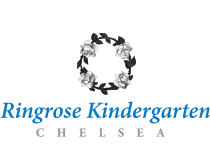page
Curriculum
Within the Kindergarten, all children are supported in their potential at their own pace. The teacher to child ratio of 1:4 for the rising three’s and 1:8 for children three years and above enables us to ensure a planned curriculum tailored to the needs of each individual child. By means of developmentally appropriate play activities and a high level of individual adult input, we offer a curriculum, which leads children to progress with confidence to the:
Three Prime Areas:
Communication and Language
In both small and large groups, children are encouraged to extend their vocabulary and fluency by talking and listening and by hearing and responding to stories, songs and rhymes. A well-stocked book corner gives every child the opportunity and encouragement to become familiar with books, able to handle them and be aware of their uses, both for reference and as a source of stories and pictures. Children ask 'how' and 'why' questions in response to stories, providing learning opportunities and make connections with their own experiences. Stories lead to conversations, empowering children to express their own ideas. Repetition of stories and poems establishes the basics of language in children's minds and reinforces learning. Children learn enjoyment of language, including humour and word play. They love to use big words and will often adopt vocabulary from books in their play. Through Role Play, Water Play, Sand and Construction activities children show awareness of their listener's needs, as they make plans, discuss ideas and act out roles. Children develop confidence and skill in expressing themselves as they talk together.
Personal, Social and Emotional Development
Within a nurturing environment, children are individually supported in developing confidence, autonomy and self-respect. Through activities, conversation and practical example, they learn acceptable ways to express their own feelings and to have respect for the feelings of others. They are encouraged to discuss their ideas, make choices, take risks and show perseverance. All children are given the opportunity, as appropriate, to take responsibility for themselves and also the group, its members and its property. They are encouraged to work independently and also to take part in the life of the group, sharing and co-operating with other children and adults.
Physical Development
A range of equipment and opportunities, both indoors and out of doors, allows children to develop confidence and enjoyment in the use and development of their own bodily skills. A very high level of adult supervision enables children safely to create and meet physical challenges, developing increasing skill and control in moving, climbing and balancing. Through Specialist-taught Games and Dance sessions children develop co-ordination, control and movement. At the same time, children are supported in the development of the fine motor skills required to use tools, including pens, pencils and scissors, and to handle small objects with increasing control and precision.
Specific Areas
Literacy
Reading
Initially we use Montessori Sand Paper letters to teach the children the phonetic sounds of the alphabet. This is strengthened with the use of the 'Jolly Phonics' scheme to help reinforce the sounds through songs and actions.
Using the phonic method, sounds are gradually blended together to form three (and more) letter words. Once a child is comfortable with 'sounding out' words, we progress to reading phrases and sentences using the Montessori Reading Scheme, and later the Ginn 360 Reading Scheme.
Writing
By tracing the Montessori Sand Paper Letter sounds children learn the sound and shape of the letter, and gain muscular memory of the shape as a prelude to writing. Children are helped to understand that written symbols carry a meaning, to be aware of the purposes of, and when they are ready, to use drawn and written symbols for themselves. Our teachers take great care to ensure that letters and numbers are correctly formed. We encourage a firm pencil grip, creating smooth outlines and good clear shapes.
Mathematics
By means of adult-supported practical experience, children become familiar with sorting, matching, ordering, sequencing and counting activities that form the basis of early mathematics. As they use their developing mathematical understanding to solve practical problems, children are assisted to learn and use the vocabulary of mathematics, identifying objects by shape, position, size, volume and number. Songs, games and picture books help children become aware of number sequences and when they are ready, to use simple mathematical operations such as adding, subtraction and measurement.
Understanding the World
A safe and stimulating environment allows children to explore and experiment with a range of natural and manufactured materials. They learn to observe the features of objects and substances, recognising differences, patterns and similarities, and to share and record their findings. Children are assisted in exploring and understanding their environment, both within the group and also in the wider community. Children to learn about animals and plants, and extend their understanding of the world. Through well planned themes and topics the children discuss individual interests, people and communities. A range of safe and well-maintained equipment enables children to extend their technological understanding, using simple tools and techniques as appropriate to achieve their intentions and solve problems.
Expressive Arts and Design
Children are encouraged to use a wide range of resources in order to express their own ideas and feelings and to construct their individual responses to experience in two and three dimensions. Art equipment, including paint, glue, crayons and pencils as well as natural and discarded resources, provides for open-ended exploration of colour, shape and texture and the development of skills in painting, drawing and collage. Children join in with and respond to music and stories, and there are many opportunities for imaginative role-play, both individually and as part of a group.

 020 7352 8784
020 7352 8784
 School Address
School Address







